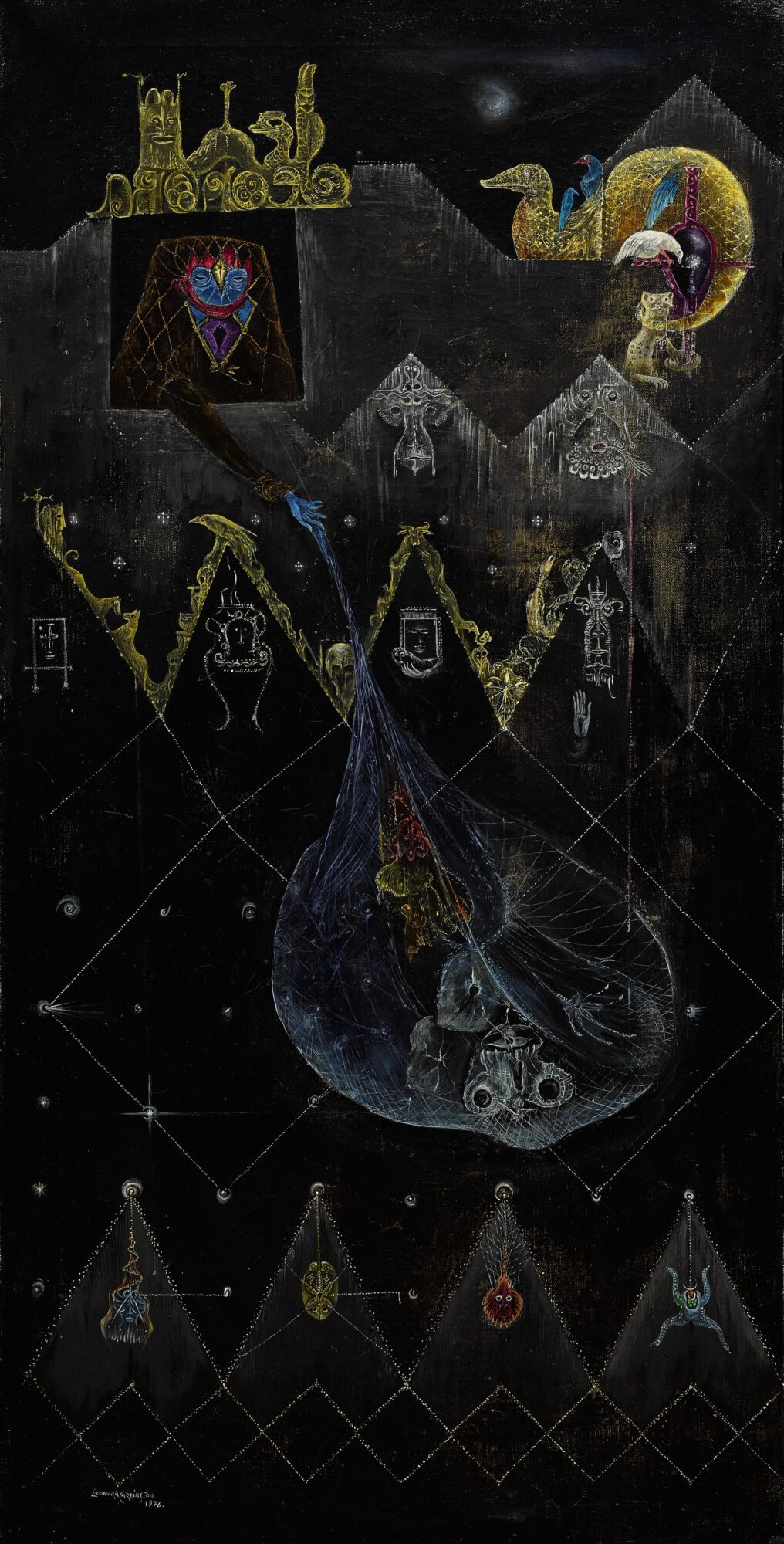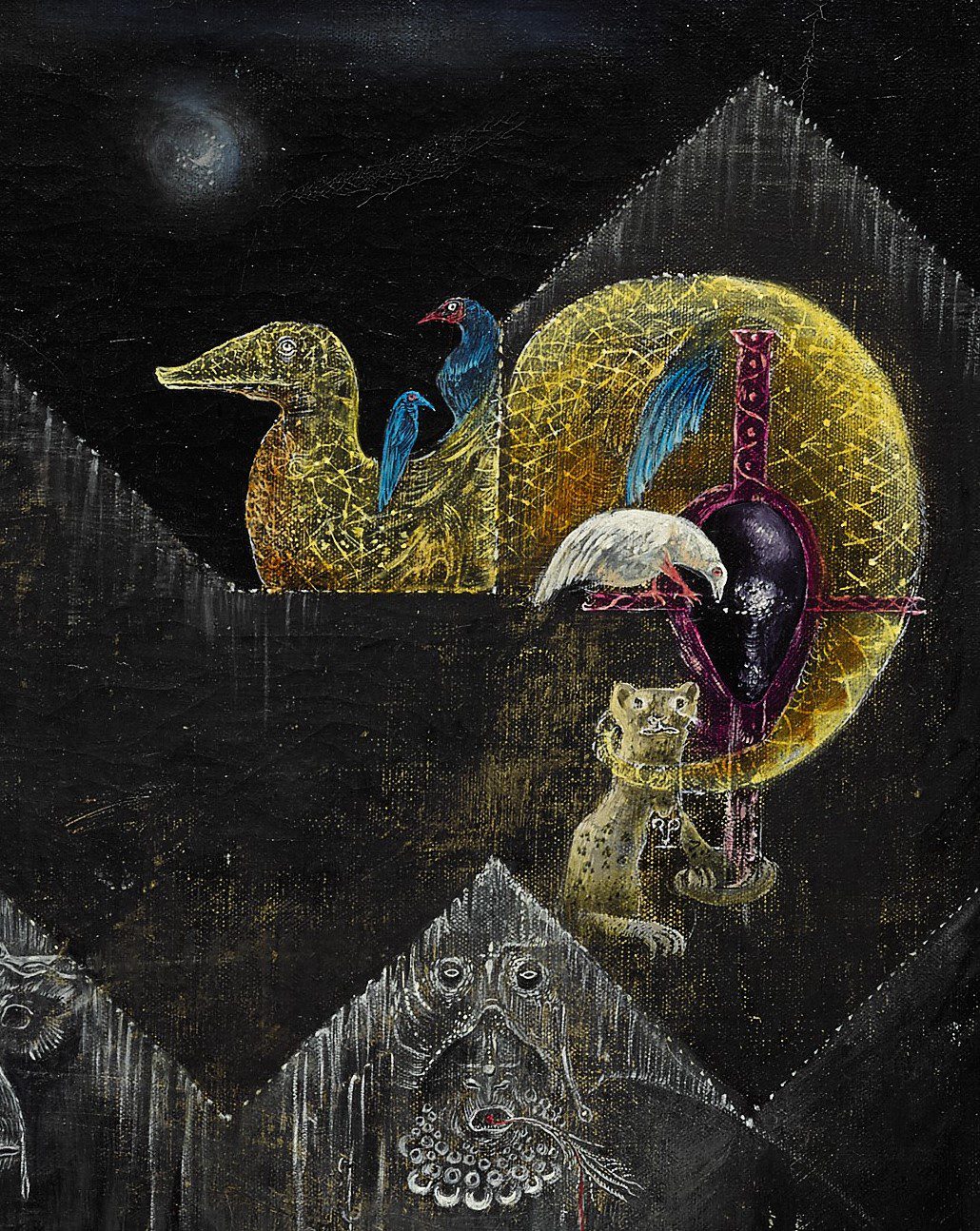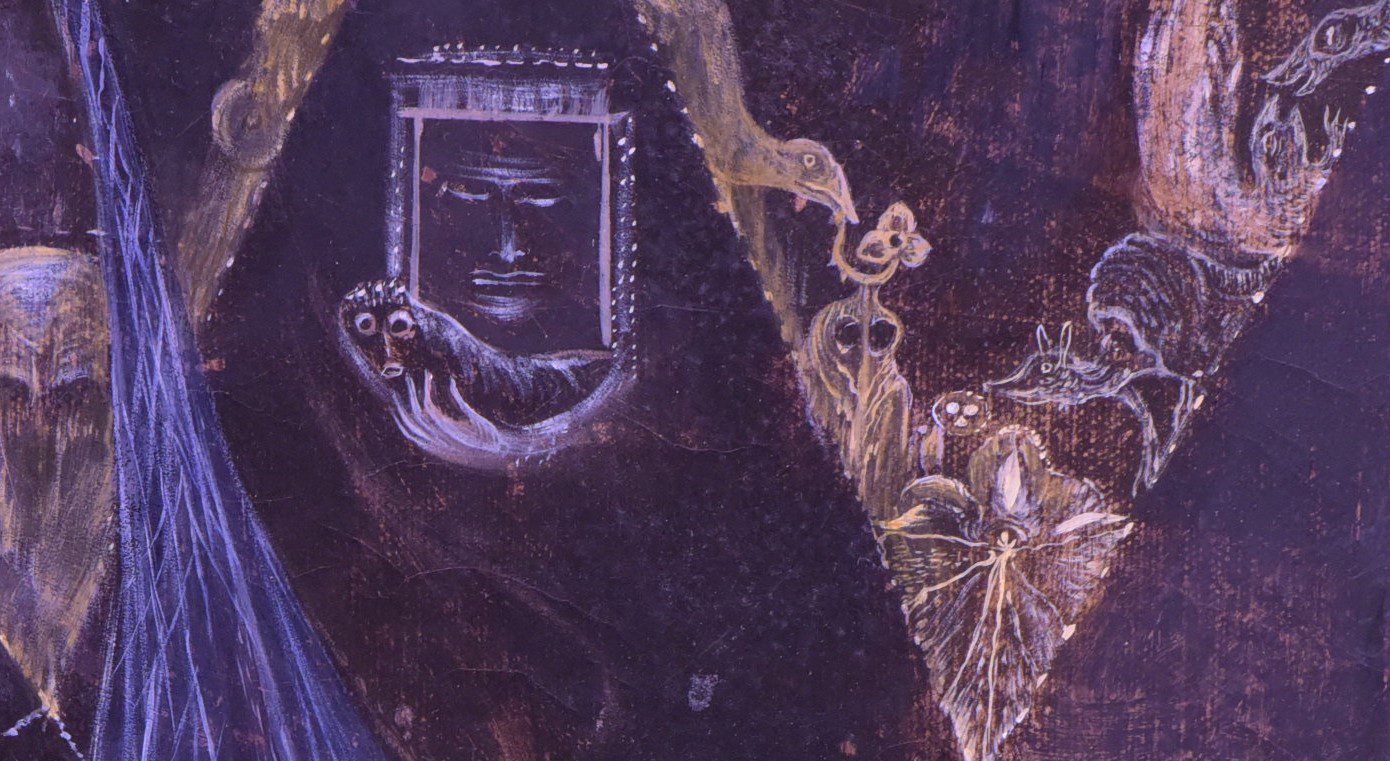Take a step into the wonderful world of Leonora Carrington
Leonora Carrington’s work, The Dark Night of Aranoë is part of the Latin American sub-collection of The Phoebus Foundation. Restorer Naomi Meulemans is in charge of the foundation’s modern and contemporary collections and started the restoration of this work following a future loan project. This month, she takes us behind the scenes of the research, the restoration and the wonderful world of Leonora Carrington.

“Leonora Carrington’s work seems to lean close to her own life. It is fragile, almost velvety at times, but also dark and analytical. Although she often painted for an unfamiliar audience, it seems as if, for a moment, we may look deep into her hidden dreams, deep happiness and at the same time, raw trauma. All these symbolic figures and sophisticated elements are also present in The Dark Night of Aranoë. Usually, only the figures or decorative elements were thickened in the paint. This way of working creates space and quickly takes the viewer far away from our “recognisable” world because of the absence of any kind of technical perspective.”

Details of The Dark Night of Aranoë

“A major comparison study with some of Carrington’s other works and a study of her methods lead us to suspect that the work was varnished at a later date, long after the work was created. Indeed, Carrington’s paintings are always very matte or even unvarnished. Because of the damage the layer does to the work, it was decided to remove it during the conservation campaign. With the restoration, we hope that this captivating work will find its strength again to inspire the viewer.”
